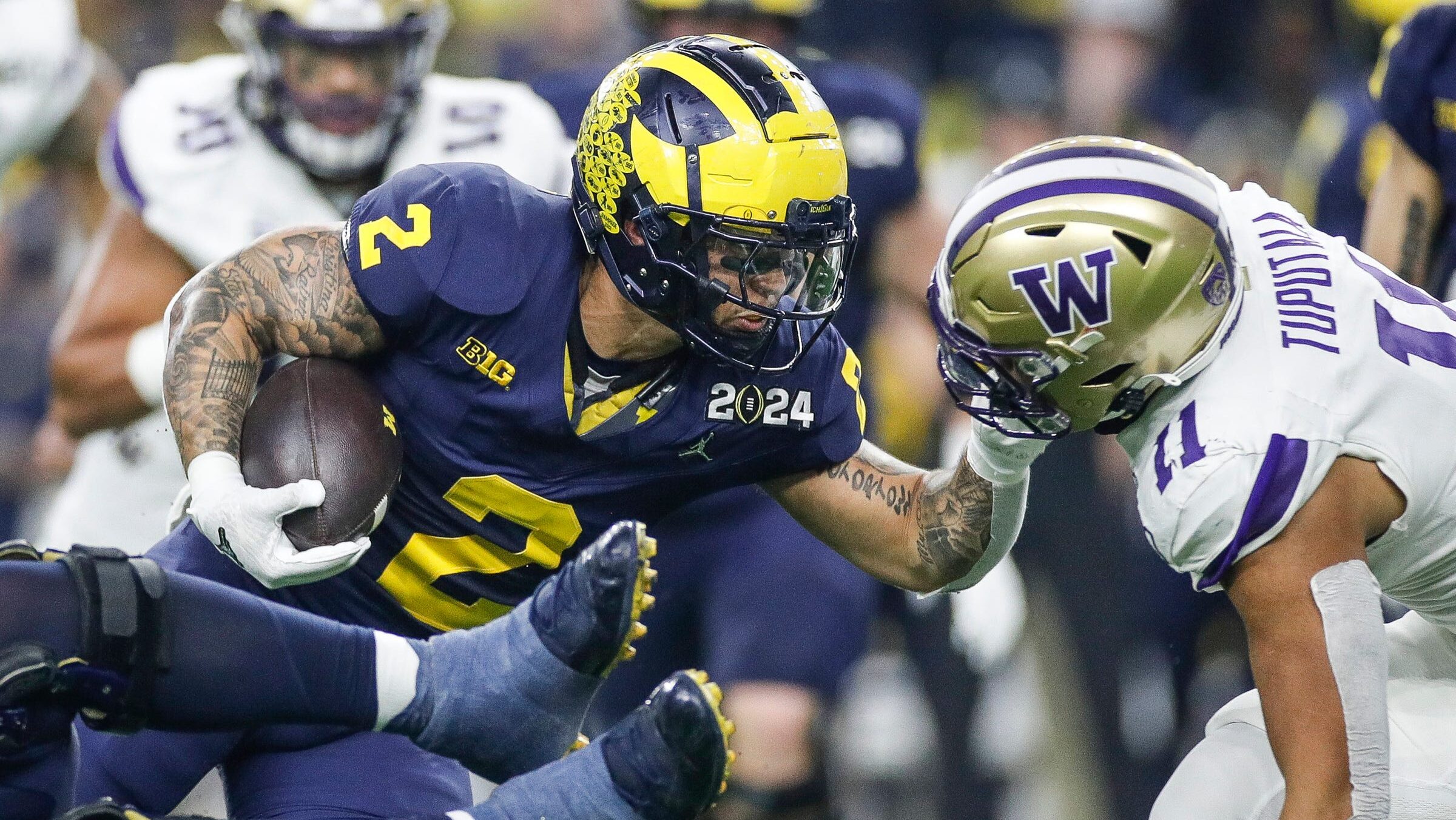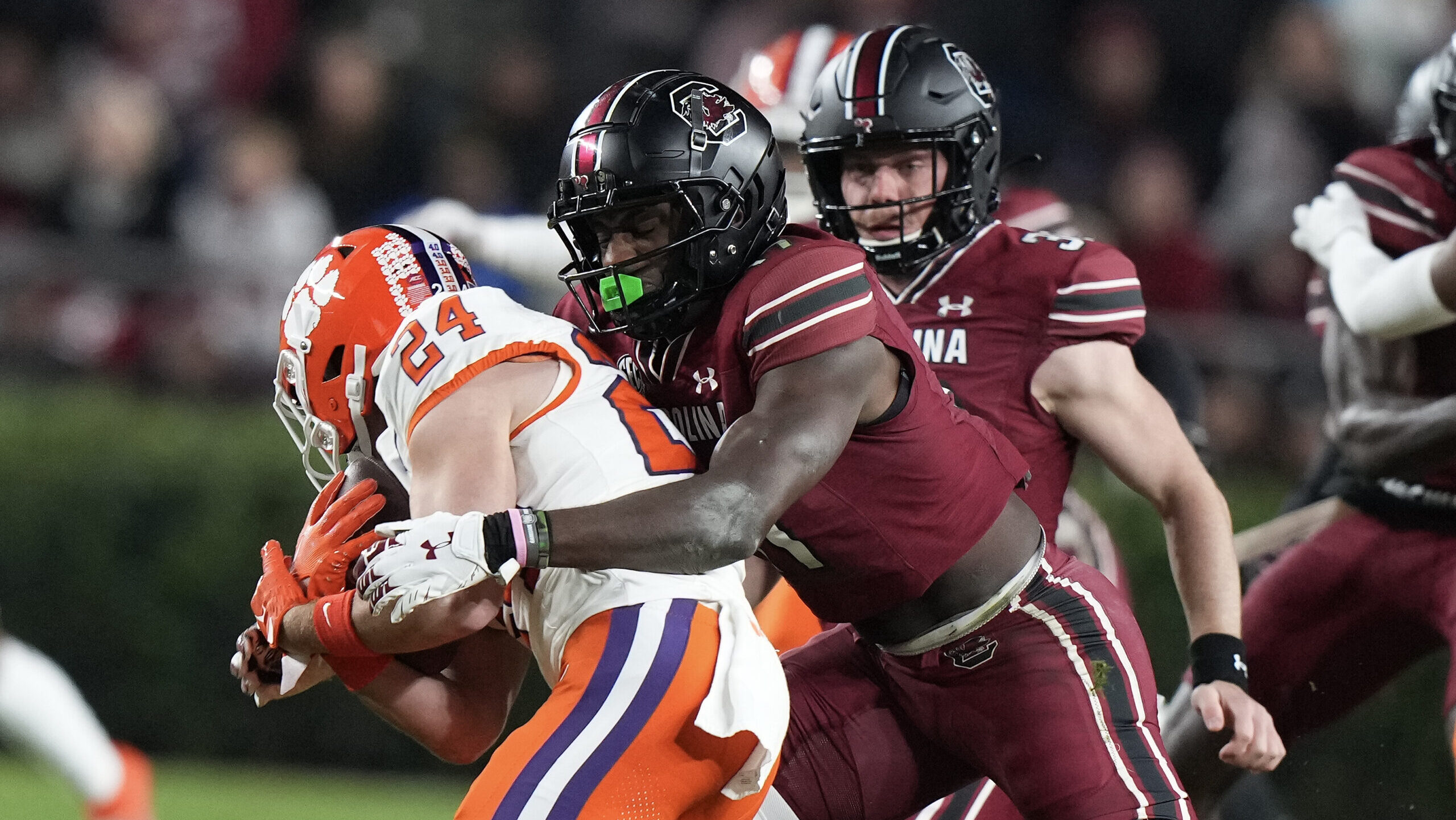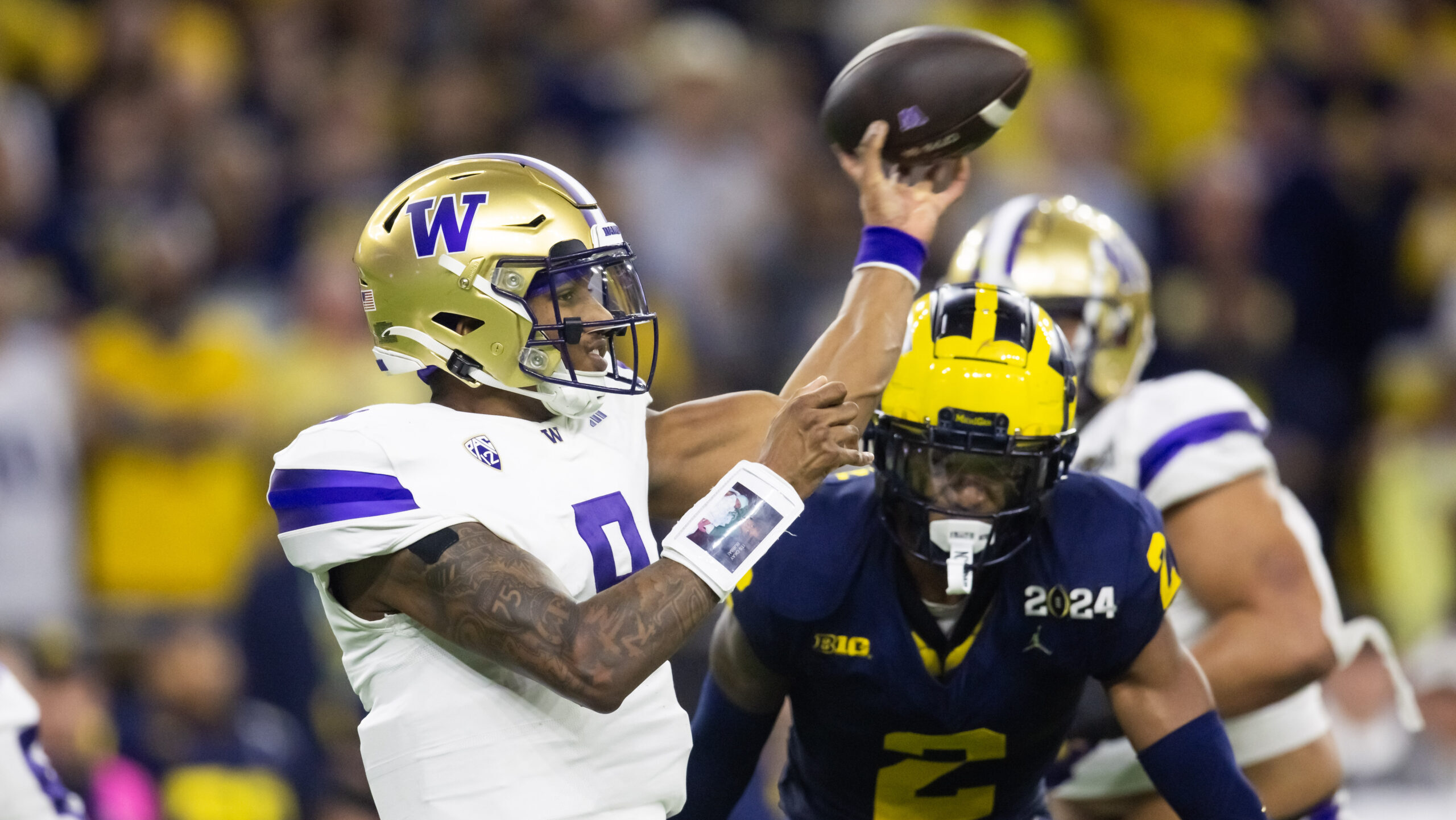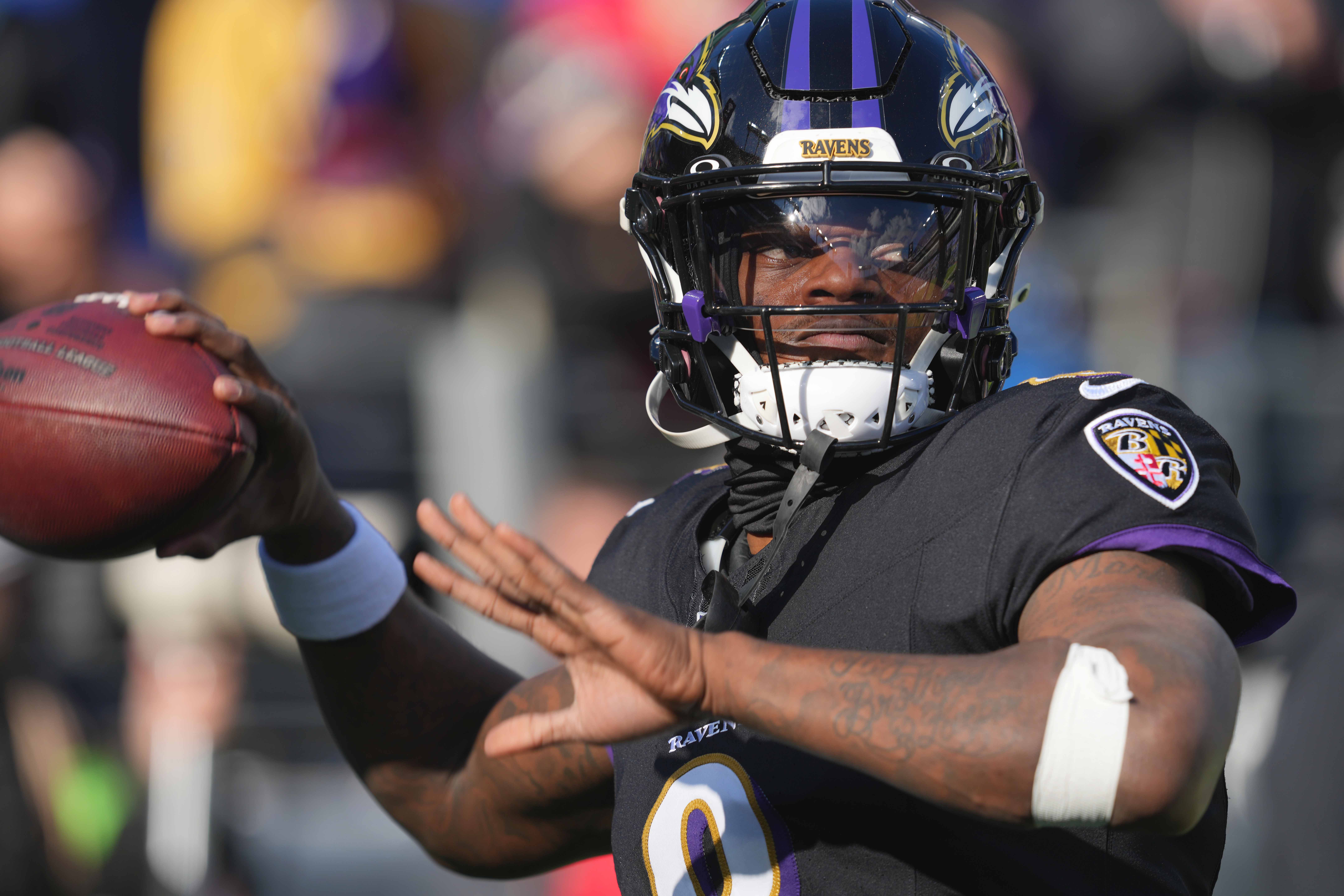Analysis
4/4/23
7 min read
Best Ball Winning Team Breakdown: Underdog's Best Ball Mania 2
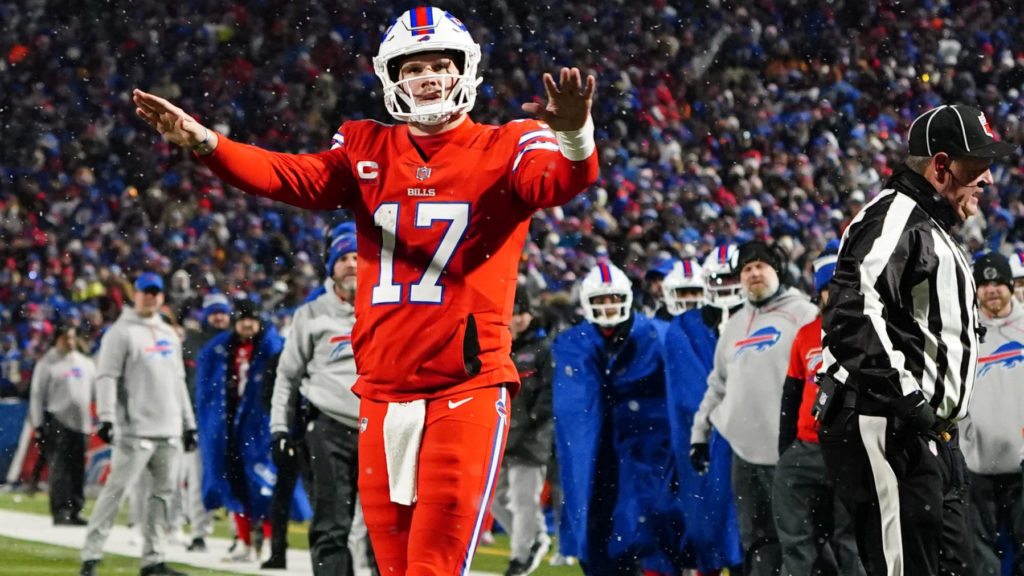
This is the third part of our three-part series reviewing winning Best Ball teams. The first part covered DraftKings' $555 for $250K tournament and the second part covered DraftKings' $2120 for $50K.
I was introduced to the best ball world after winning Best Ball Mania 2 (BBM2) on Underdog for $1 million in 2021. Reviewing the team allows me to share the draft board from my winning team along with the team itself.
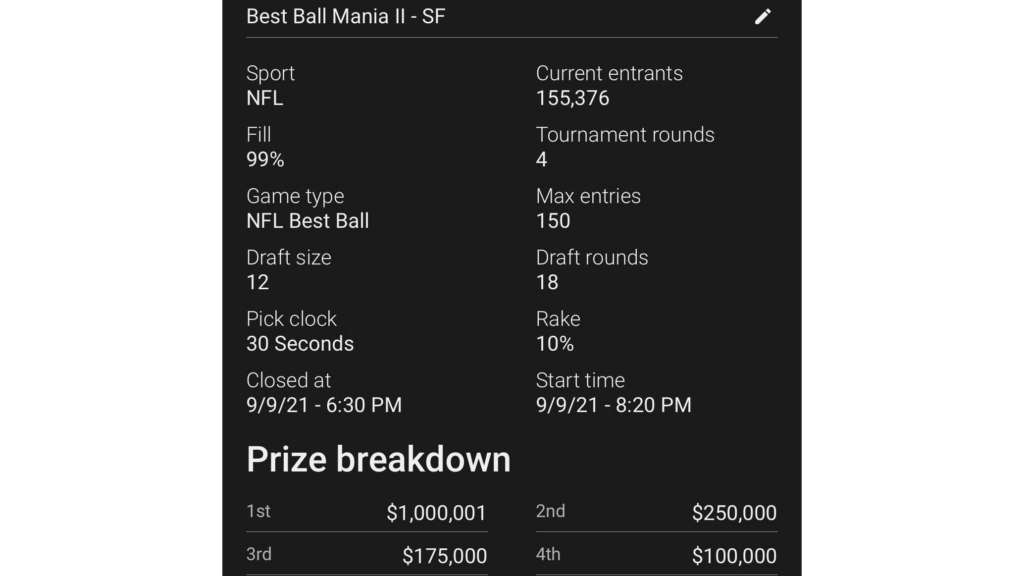
BBM2 was a nearly 155,500-entry contest. These “flagship” tournaments are classified as large-field lotteries. Yes, it takes skill to win, and it’s a good sign the past three winners are sharp fantasy players. However, there is a lot of variance in these types of tournaments compared to a smaller field. It’s also just how top-heavy these contests are. First place got $1 million, and the fourth-place finisher got 10 percent, or $100,000.
Winning Team’s Structure
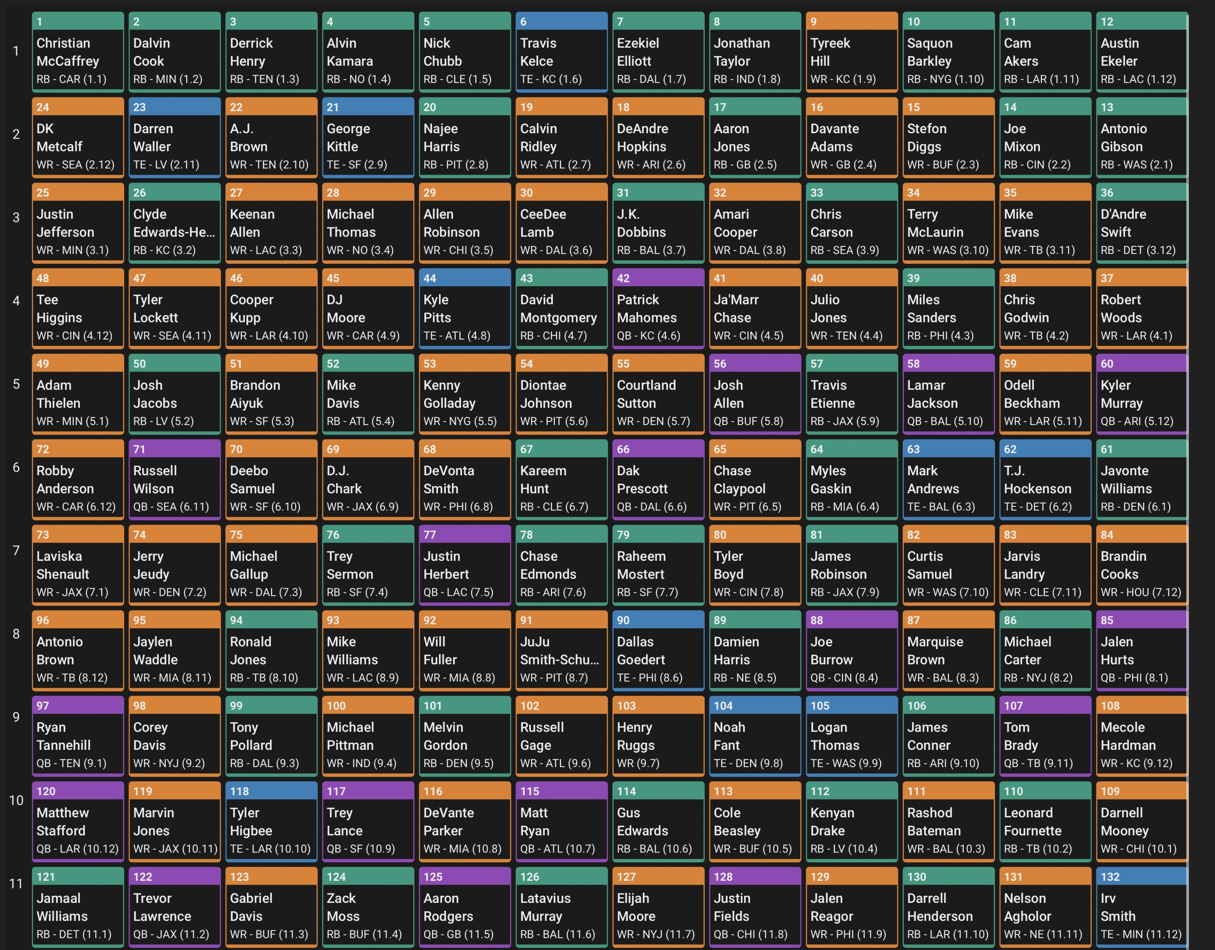
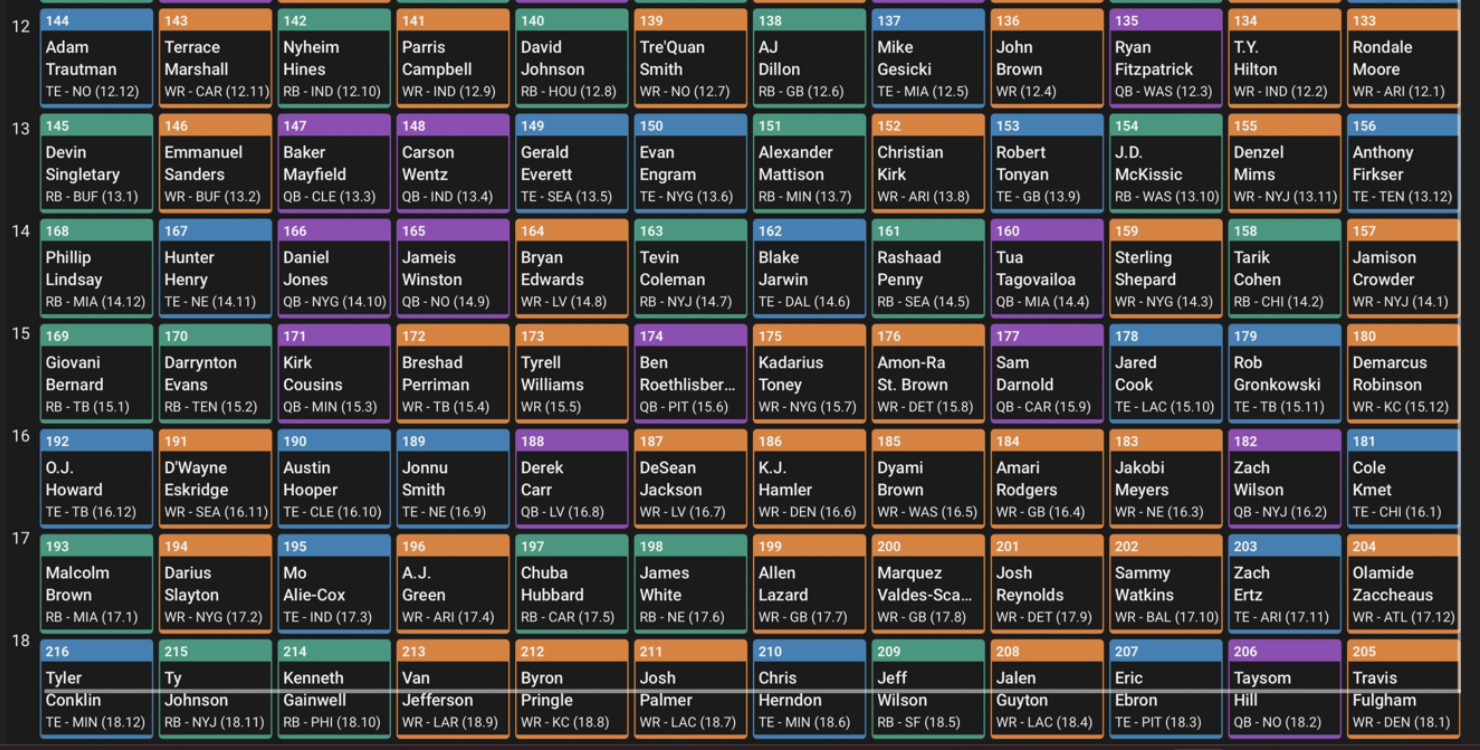
The draft board for the winning team can be seen above. My team was No. 8, the one starting with Jonathan Taylor and Aaron Jones. The team was drafted in mid-June. It’s nice to know you can win a contest without other drafters doing weird things, such as taking Brian Hoyer or another backup quarterback in the third round.
Several of the people in the draft were sharp fantasy players. Sometimes it's nice to draft against fellow sharp players, who are more predictable (i.e. they won’t just spite pick an unstacked quarterback) rather than drafting with the casual August crowd to win tournaments.
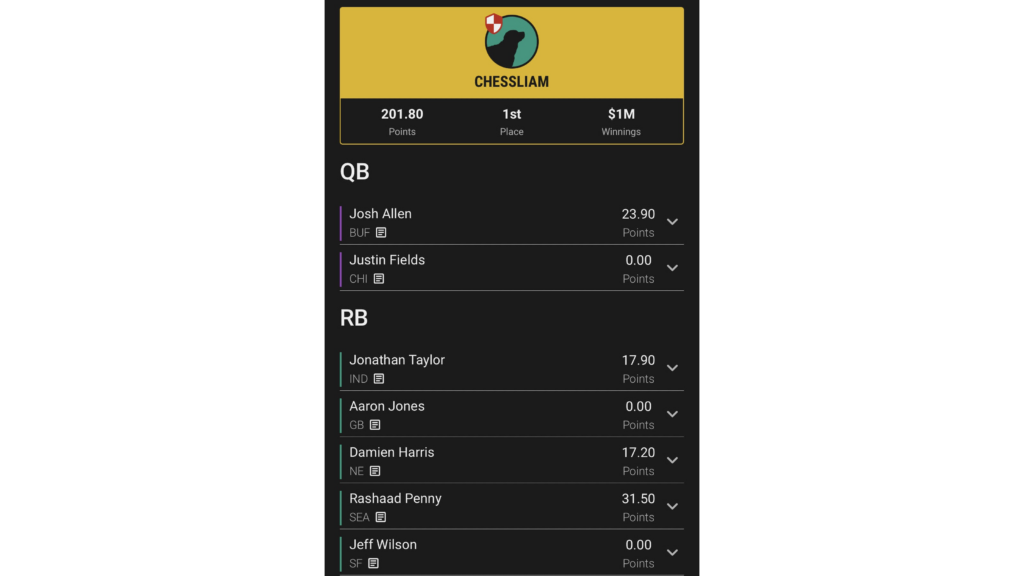
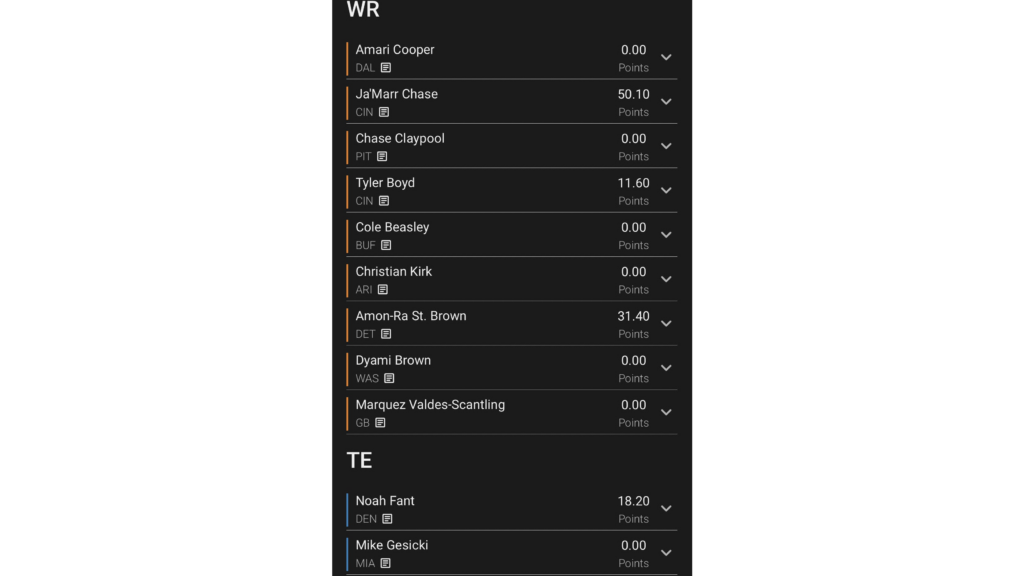
The winning team, broken down by position and how many points they scored in Week 17 is above.
Team stacks included:
Josh Allen - Cole Beasley, Ja’Marr Chase - Tyler Boyd and Jones - Marquez Valdes-Scantling for 6/18 players.
Week 17 stacks included:
Detroit Lions - Seattle Seahawks (two players), Buffalo Bills - Atlanta Falcons (two players), Cincinnati Bengals - Kansas City Chiefs (two players), Dallas Cowboys - Arizona Cardinals (two players) for a total of 8/18 players. I was ahead of the curve on game stacking in Week 17 for best ball and helped popularize the strategy for the next season.
Quarterback
The team used an elite quarterback in Allen and an upside mid-round player in Justin Fields. Drafting an elite quarterback allows you to draft any second quarterback, so why not roll the dice on landing another elite quarterback? The drawback is you’re spending a mid-round draft pick where fantasy talent still can be found.
Allen ended up smashing, and Fields did not contribute a single fantasy point to the squad. There is some consolation in being directionally accurate as Fields smashed the following year.
Many sharp bettors balked at taking an elite quarterback in the third and fourth rounds. They felt it was better to draft wide receivers and running backs and to hit the quarterback in the middle rounds.
However, on half-point websites, quarterbacks contribute a higher percentage of total points than wide receivers and running backs. Elite quarterbacks were being undervalued in this draft, so we took advantage.
Even if they were overvalued, we could out-draft the field in the later rounds, and if Allen hit a 40-point game in Week 17 – you weren’t finding a mid-round quarterback to close that gap. It’s interesting to note the fantasy market this year is pricing the elite three in Allen, Patrick Mahomes and Jalen Hurts as second-round picks as of this writing.
Running Back
The team’s anchors at running back were Taylor and Jones. Taylor was RB1 that season and one of the MVPs of the team. Damien Harris was a mid-round selection, and his 15 touchdowns that season, along with his huge fantasy semifinals, is one reason the team reached the finals.
Rashaad Penny, a 14th-round pick, ended up going nuclear in Week 17 and the rest of the fantasy playoffs. He was an integral part of the team after putting up nothing in the regular season.
Jeff Wilson was a player we invested in a lot after it was disclosed he would miss the start of the season because of an injury. That gave us great playoff leverage, and it’s always smart to target San Francisco 49ers running backs.
Wide Receiver
At wide receiver, the rookies and late-round picks led the way. Amari Cooper was a third-round pick, and he had a good, not great season. Chase didn’t scare us away, despite dropping some passes during training camp. He was touted as a generational prospect, and Cincinnati was a great spot for him. Chase was also a rookie, and they tend to score the most points later in the year (when the money is made).
Chase Claypool had a disappointing year as a sixth-round pick, but Boyd had a good year and produced in the fantasy playoffs.
Nailing two late-round picks bailed the team out. Christian Kirk outperformed his 13th-round draft capital. Amon-Ra St. Brown, selected in the 15th round, provided a winning mini-stack with Penny and smashed down the stretch.
Dyami Brown didn’t do anything all year, but Valdes-Scantling had a spike week in the fantasy playoffs, helping the team advance.
Tight End
The idea was to draft two solid, mid-round options in Noah Fant and Mike Gesicki, but they had disappointing regular seasons.
Fant scored a touchdown in Week 17 and ended up being the top scorer at the position at very low ownership. That year Mark Andrews was super chalk at nearly 50 percent ownership in the finals — so the garbage time Fant touchdown cemented the team’s victory.
Winning Team Similarities
With the breakdown of the winning teams complete, let’s look at some similarities between them.
- Two of the three winning teams took an elite quarterback early. The “Elite QB” strategy makes sense because the market is good at ranking quarterbacks and most of the 30- to 40-point performances come from the top quarterbacks.
- In each draft, team stacks and Week 17 stacks were targeted. Team stacks help with both positive correlation and negative correlation. For example, if your team stacks a good offense, more than one player can score a touchdown in a given week.
- Negative correlation can be equally as helpful when one player on a team can score a lot of points in the regular season or one round of the fantasy playoffs. This allows you to advance a lower-owned teammate, which gives you leverage on the field.
- Week 17 game stacks are a big reason for winning BBM2. Getting a 30-point performance from Penny and St. Brown was huge for distancing the team from the field. Week 17 game stacks will naturally help you differentiate your portfolio.
- Every team had players the field was not drafting, helping build playoff leverage. My winning 555 team included Trey McBride, Geno Smith and Jaylen Warren.
- The $2,120 team included Smith and Tyler Conklin. The BBM2 team had Wilson Jr., who contributed in Week 16. Simply put, if you’re drafting players the field is not - and they score a lot of points in the playoff rounds - you’re likely separating yourself from the field.
- Every one of my teams had at least four wide receivers by the eighth round. Wide receiver, unlike running back, usually dries up early.
- This isn’t a hard rule, but it’s generally easier to find useable weeks from late-round running backs (handcuffs) than receivers.
- Every one of my teams had at least one running back by the second round. Usually, my teams lean toward wide receivers, so it’s surprising all three winning teams had at least one elite running back drafted by the second round.
I hope you enjoyed my three-part series breaking down my winning teams. You can find me on Twitter at @ChessLiam. Also, keep your eyes posted on The 33rd Team's Twitter for my once-a-month draft streams.


